Elder (elderflower)
At this time of year the elder tree just outside our back wall was just coming into flower but I chose to collect the leaves for dyeing. Maybe later in the season I'll tackle the berries!
The gauze was not mordanted but the yarns were mordanted with alum, the one on the right modified after with copper water.
About 200%wof was used and I was suprised just how lovely and bright the green was. I'd begun to expect rather lichen shades.
About 200%wof was used and I was suprised just how lovely and bright the green was. I'd begun to expect rather lichen shades.
Alder
I had to stray over a couple of fields of footpaths to come across an accessible alder, identified from its little cones.
I collected some leaves and also some bark from fallen branches lying underneath. The leaves were put in a bucket and steeped initially overnight in freshly boiled water then brought to a simmer for 1 hour the next morning. the leaves were strained out and alum mordanted fibres added, simmered for 1 hour and left overnight to cool.
The bark was treated the same except It steeped in a bucket for 3 days before heating. Since there would be tannin from the bark I did not mordant the fibres here.
I collected some leaves and also some bark from fallen branches lying underneath. The leaves were put in a bucket and steeped initially overnight in freshly boiled water then brought to a simmer for 1 hour the next morning. the leaves were strained out and alum mordanted fibres added, simmered for 1 hour and left overnight to cool.
The bark was treated the same except It steeped in a bucket for 3 days before heating. Since there would be tannin from the bark I did not mordant the fibres here.
From top down, the photo shows alder bark unmodified and modified with copper, then alder leaves unmordanted and alum mordanted.
A couple of days later I went back and found lots of fallen alder cones. Put in a bucket I added recently boiled water to cover and left overnight. After only a few minutes I could see the water had turned a rich brown. All the contained seeds and oils had been released from the cones and there was quite an aroma by the morning. I brought this mixture to a simmer for an hour, strained the liquid and added my fibres. After an hour's simmer I let it cool down. The fibres both unmordanted and mordanted with alum were a rich golden brown which turned a lovely dark black/brown when modified in heated iron water.
A couple of days later I went back and found lots of fallen alder cones. Put in a bucket I added recently boiled water to cover and left overnight. After only a few minutes I could see the water had turned a rich brown. All the contained seeds and oils had been released from the cones and there was quite an aroma by the morning. I brought this mixture to a simmer for an hour, strained the liquid and added my fibres. After an hour's simmer I let it cool down. The fibres both unmordanted and mordanted with alum were a rich golden brown which turned a lovely dark black/brown when modified in heated iron water.
Willow
Testing out the dye from willow leaves was a bit of a suprise for me as I got lovely orange tones on the alum mordanted fibres (left yarn and gauze) which turned a rich brown when modified with copper (right yarn)
Copper beech
I was able to sample 2 or three different copper beech trees around our village and I wanted to see if the degree of copper-ness in their leaves affected the dye. I had heard that the leaves could give pink shades to the dyed fibres.
In each dye pot for a different tree I found that unmordanted yarn and wool gauze turned brown and alum mordanted yarn (bottom skein in each photo) was quite an olive green. No pinks unfortunately! The samples in the left photo came from a copper beech with slightly greener leaves but I didn't find this produced any change in the dye. The fibres were only paler because the dyepot contained 200%wof versus 300%wof for the samples on the right. A different mordant might have changed the results of course.
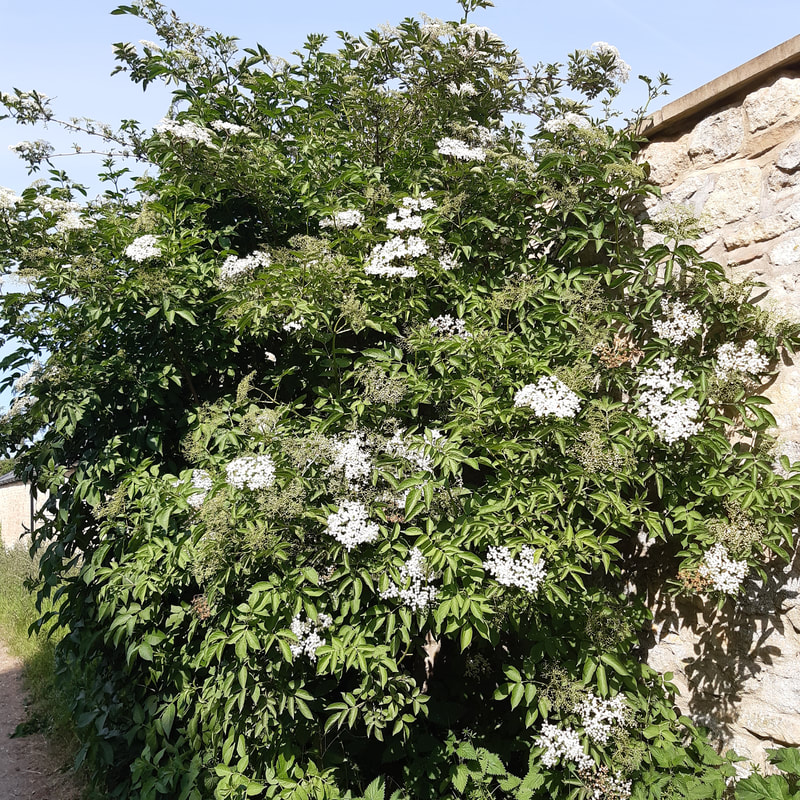
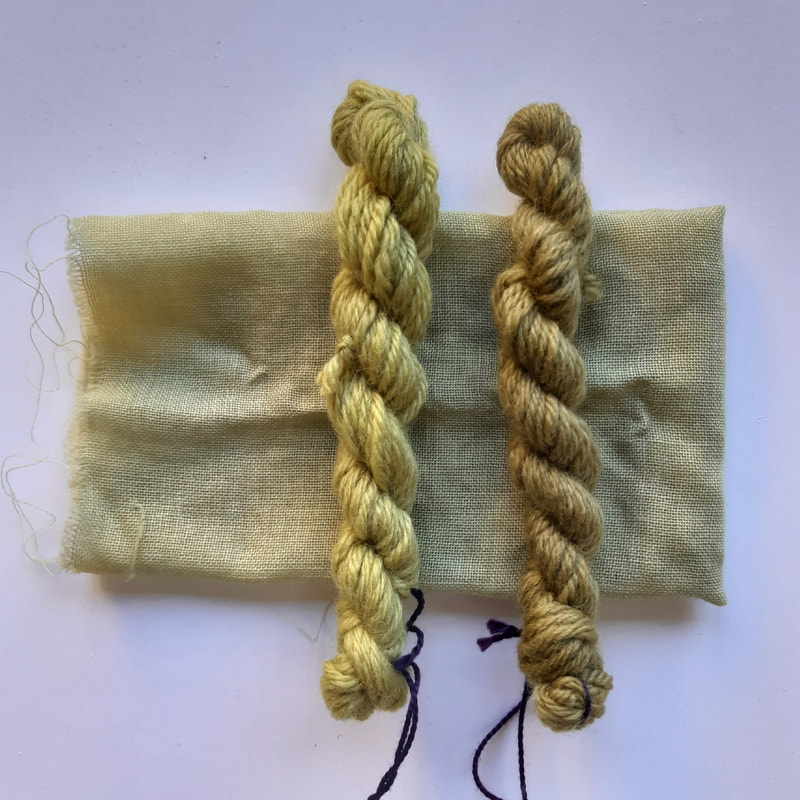
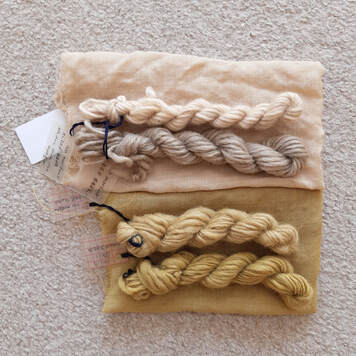
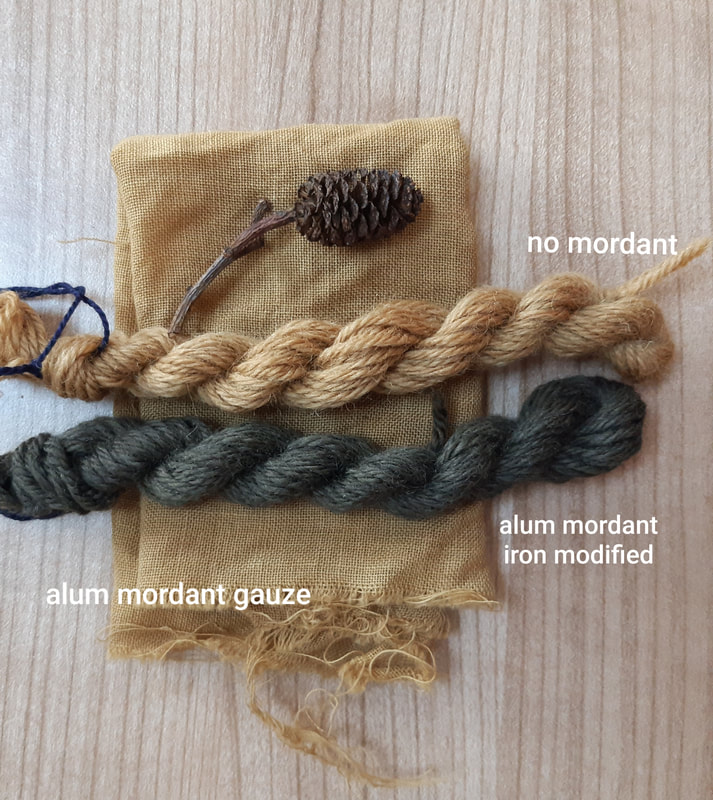
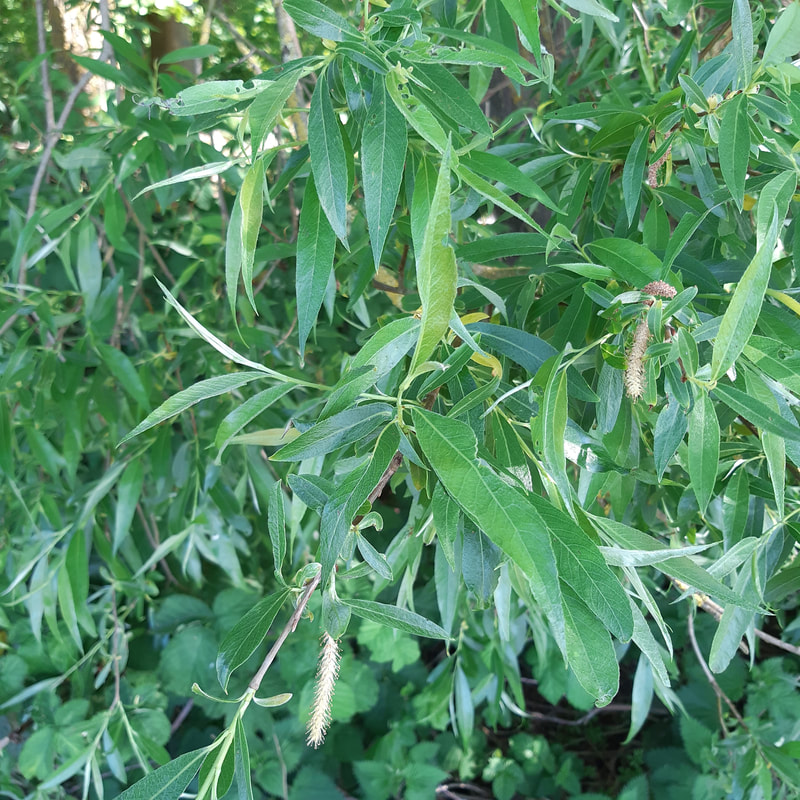
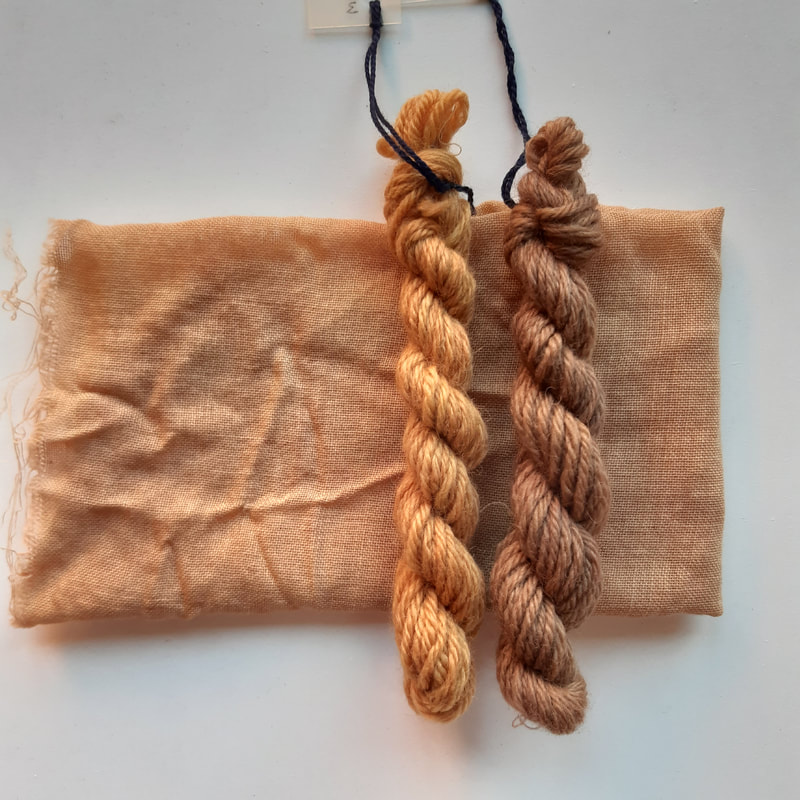
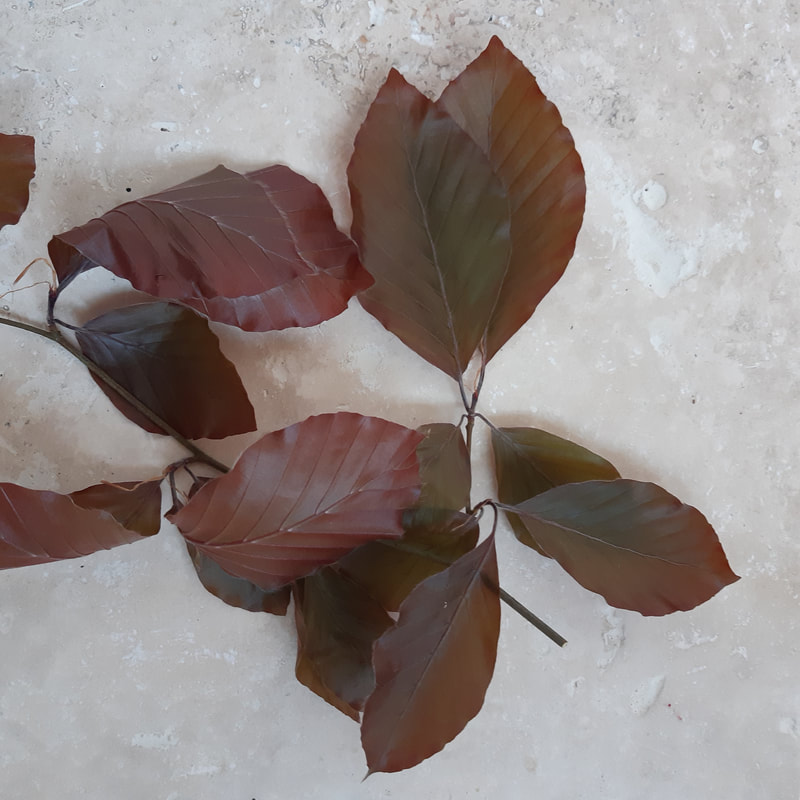
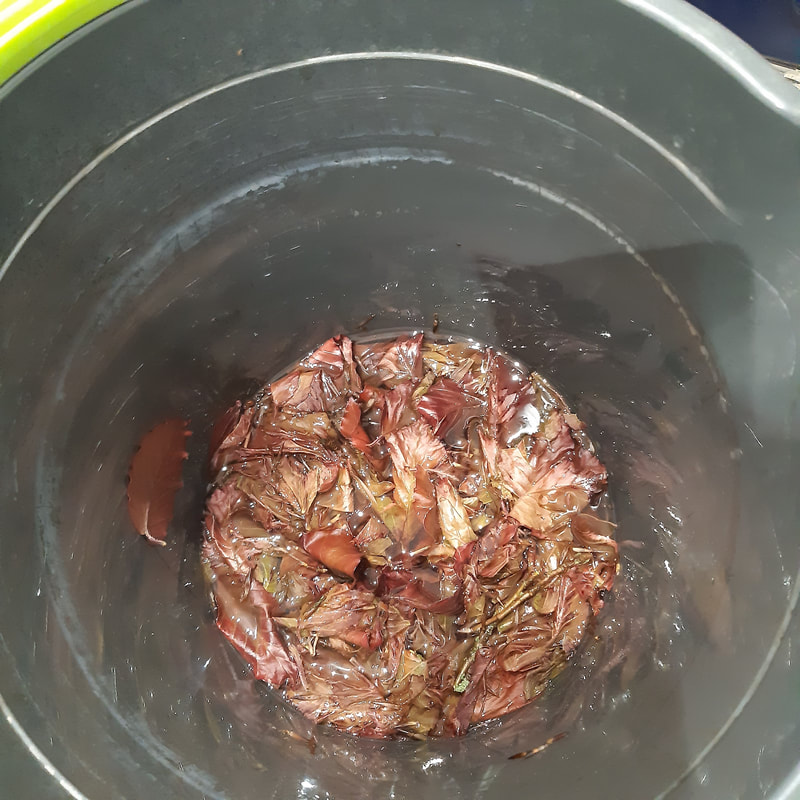
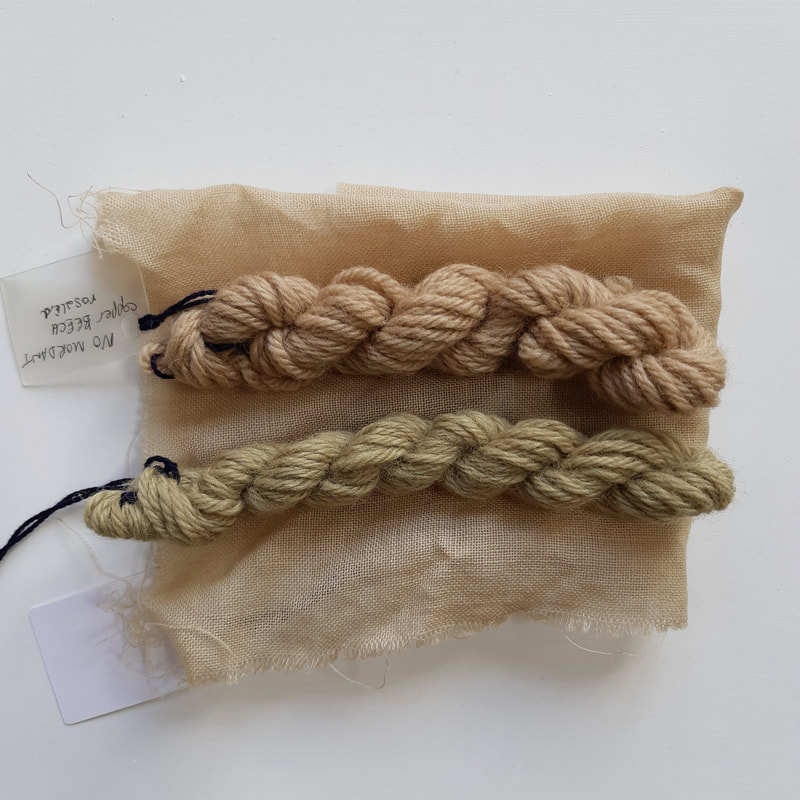
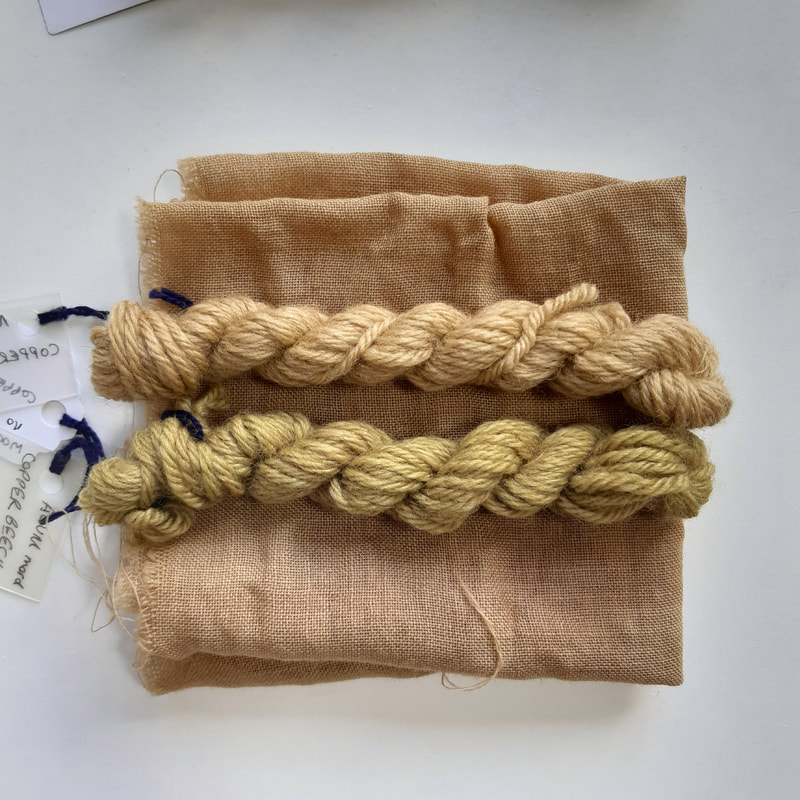
 RSS Feed
RSS Feed
